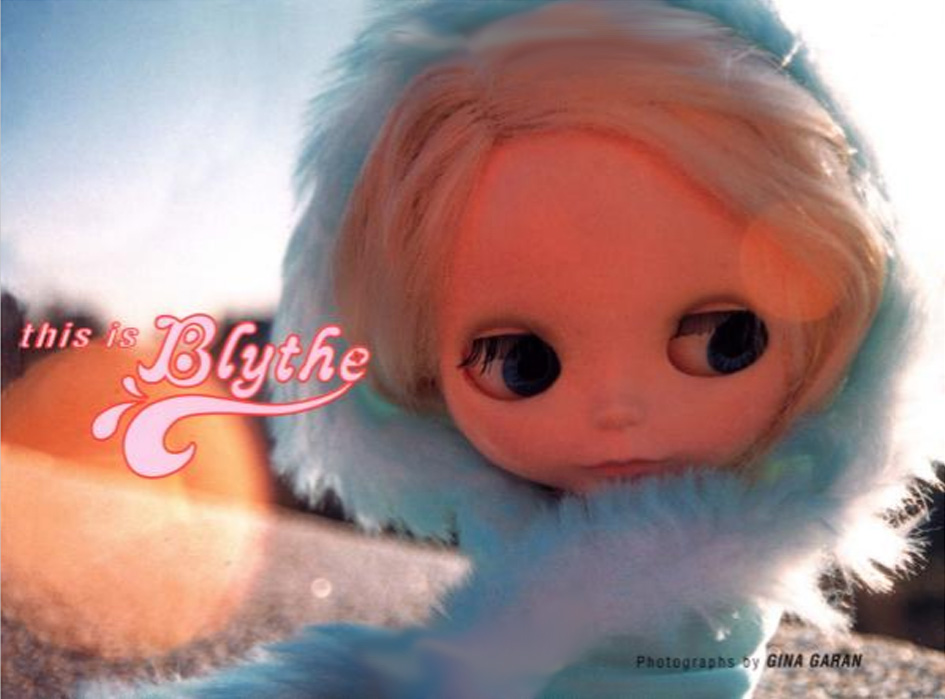✽ ✽ ✽ blythe history
 Junko Wong and Allison Katzman by funnybunny
Junko Wong and Allison Katzman by funnybunny
✽ ✽ ✽ quick as a wink! blythe's eyes change color and expression...
Blythe was designed by Allison Katzman in 1972 and manufactured by the Kenner company. Her bountiful hair could be brushed and braided, and with the simple pull of a string, her eye color would change. Her iconically large head was to support these two features. The eye mechanism patent credits Gordon Barlow, Marvin I. Glass, and Norman T. McFarland. Blythe failed to become popular, as the sensibilities of girls in the 70's were unfortunately unprepared for Blythe's strange and mysterious charm. Many found her to be creepy. The Kenner Blythe was produced for only one year before being retired.
She was also sold in Japan under the name Mahou no Hitomi Ai-Ai Chan (pronounced eye-eye, translates to Magic Eyes Ai-Ai), manufactured by TOMY. These dolls are much harder to come by than Kenner Blythes; because the Kenner Blythes and Ai-Ai Chans are extremely hard to tell apart, it is hard to know if a vintage Blythe was made by Kenner or TOMY without the box or clothing. While the Kenner Blythes came in the vibrant, elegant, and earthy designs that were popular in the states, Ai-Ai Chan's outfits and box were on the cuter side.
Fast-forward to the year 1997: a Kenner Blythe became the muse and model of photographer Gina Garan, who received her from a friend who said they found a doll that looks just like her. Garan carried her around on her work travels and took many beautiful photographs. At a party in 1999, Garan was introduced to CWC director Junko Wong by illustrator Jeffrey Fulvimari, and upon seeing Garan's work, Wong knew instantly that Blythe would be a hit in Japan.

In 2000, Gina Garan's photographs of her Kenner Blythes were published in a book titled This is Blythe by Chronicle Books. (She would later run a forum by the same name, but the domain was sniped by scammers.) The book was later published in Japan by PIE Books. According to an interview with Collector's Weekly in 2010, when she contacted Hasbro about producing the book, they hadn't even heard of Blythe. The book was a hit and was covered by People Magazine, The New York Times, and Vogue Japan, where every month for a year, Blythe would get a full-page feature, shot by Garan and wearing a different designer outfit.
Blythe made her official comeback in 2000 as the star of a commercial for the department store Parco, and she went on to star in more commercials, such as the Target commercial promoting Alexander McQueen's clothing line. The first Neo-Blythe was a collaboration with Parco.
Blythe's official website went live in May of 2001, a month prior to the first Neo-Blythe release, which coincided with an exhibition at Shibuya Parco featuring Gina Garan's photography. This exhibit moved to other stores as well. Fans lined up to buy a Blythe of their own and ask Garan for a signature. While the dolls at Shibuya Parco sold out very quickly, attendees at the Osaka Parco were able to line up again and buy multiple dolls. There was another show in October of the same year, Blythe Returns, at a gallery run by CWC, featuring more of Gina Garan's photographs.
Because Kenner was acquired by Tonka, which was then acquired by Hasbro in 1991, all intellectual property of Blythe belongs to Hasbro. Cross World Connections and Takara were given license to manufacture Blythe again, which they aptly named Neo-Blythe, and CWC to this day handles the creative production of Blythe. Neo-Blythe dolls were manufactured by Takara until 2021, when Good Smile Company took over.
Ashton-Drake Galleries also produced a series of Blythes; replicas of the original Kenner dolls down to the clothing and boxes, they were produced from 2005 til 2008. The initial release was not particularly popular due to the greenish tint of the skin.
Blythe has also been produced in 21 cm and 12 cm size, referred to as Middie and Petite respectively. Petite Blythe was introduced in 2002 and was produced until 2014. Middie Blythe was released in 2010 and produced until 2020.



